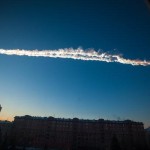The tribes are concerned the turbines will interfere with fishing; cable interests say lines in the area could be damaged.
By Bill Sheets, Herald Writer
EVERETT — While a federal study recently gave an environmental OK to the Snohomish County Public Utility District’s plan to try out two tidal power turbines, some don’t agree with the conclusion.
Three Indian tribes, a cable company and a cable trade group all sent letters last week to the Federal Energy Regulatory Commission opposing the Admiralty Inlet project as it’s proposed.
The tribes, including the Tulalips, say the turbines could interfere with fishing. The cable interests believe the project could damage trans-Pacific cables that run through the inlet.
The letters were sent to meet Thursday’s deadline for commenting on the federal environmental study.
The tribes and others expressed concern earlier in the process as well, but the 215-page draft report concluded that the turbines pose no threat to the cables, wildlife habitat or fishing.
Officials with the PUD have seen the latest responses, said Jeff Kallstrom, an attorney for the utility.
“We’re still looking them over in detail. I don’t think anything that’s said is something that hasn’t been said before,” he said.
A final environmental study could be written this spring or the Federal Energy Regulatory Commission could simply reference the comments in either issuing or denying a license for the $20 million project, Kallstrom said. Either way, he expects a decision this summer, he said.
The first draft of the study concluded the turbines would not interfere with tribal fishing in part because “the size of the project would be very small relative to the fishing area. There is no current use of the project site as a commercial salmon fishery.”
The Tulalip Tribes, the Suquamish Tribe and the Point No Point Treaty Council, representing the Port Gamble and Jamestown S’Klallam tribes, each sent letters disputing the report’s conclusions.
“Development of this project would force the state and tribe to close this area for all types of fishing due to the safety hazards of fishing gear or anchor lines getting caught in the turbines,” wrote Daryl Williams, environmental liaison for the Tulalip Tribes, in a 35-page letter to the federal agency.
In the PUD’s project, the turbines would be placed in a flat area 200 feet underwater. Each circular turbine resembles a giant fan, sitting about 65 feet high on a triangular platform with dimensions of about 100 feet by 85 feet. The turbines are made by OpenHydro of Ireland.
The turbines would be placed about 575 and 770 feet from fiber-optic cables owned by Pacific Crossing of Danville, Calif. The cables extend a total of more than 13,000 miles in a loop from Harbour Pointe in Mukilteo to Ajigaura and Shima, Japan, and Grover Beach, Calif.
The company and the North American Submarine Cable Association, based in Morristown, N.J., both wrote to dispute the study’s findings.
The proposed distances from the turbines to the cables “significantly depart from industry standards,” said Robert Wargo, president of the cable association, in his letter to the federal agency.
Kurt Johnson, chief financial officer for Pacific Crossing, has said the company is concerned that the cables could be damaged by the placement of the 350-ton turbines or by anchors from boats in the area, he said.
Officials with the PUD earlier submitted to the federal agency a list of precautions that crews would take when operating near the turbines. The most important of these is that boats would stay running when in the area to eliminate the need for dropping an anchor, according to Craig Collar, senior manager for energy resource development for the PUD.
For placing the turbines, OpenHydro officials have told those at the PUD they can get them within 10 feet of their target locations, Collar said.
At peak output, the turbines are expected to generate 600 kilowatts between them, enough to power 450 homes, PUD spokesman Neil Neroutsos said. Most of the time the output will be less, officials said. They emphasized that this would be only a demonstration project intended to determine whether more turbines could be effective in the future.
The project is expected to cost $20 million to $25 million. The PUD has received nearly half that amount in a $10 million grant from the U.S. Department of Energy.



















